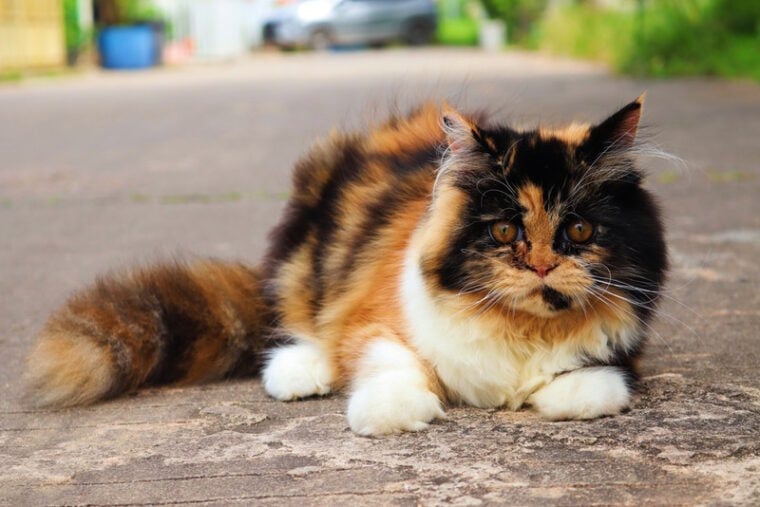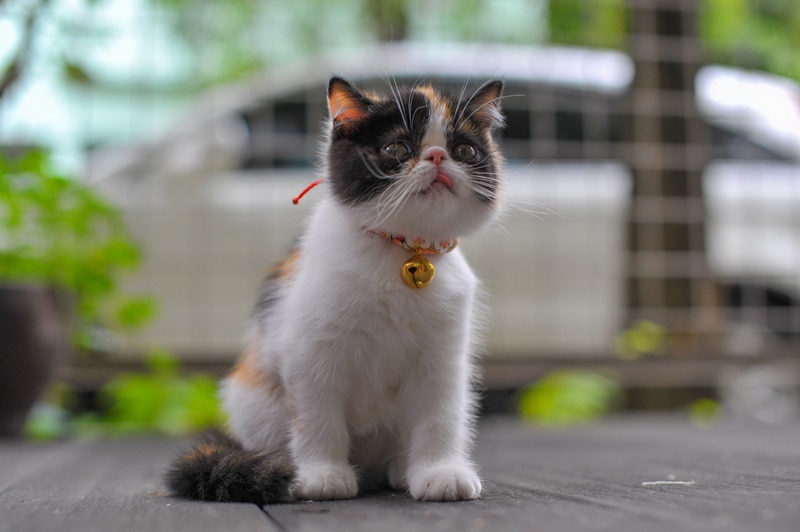
Click Below to Skip Ahead
Among the most beautiful cat breeds are Ragdolls. This adorable cat is found countrywide in the USA and is slowly becoming one of the most popular due to its beautiful appearance and gentle personality.
Breed Overview
Length:
12 – 18 inches
Weight:
12 – 20 pounds
Lifespan:
15 – 20 years
Colors:
White, brown, and black
Suitable for:
Small families living in quiet neighborhoods with playful kids
Temperament:
Calm, confident, loyal, loving
Before we continue, it’s important to note that if a Ragdoll cat is calico then it is most likely a mixed breed. This is because the breed does not have the gene for the calico coat pattern. Instead, the Ragdoll is a pointed breed, and cannot have calico coloring. However, a Ragdoll cat can have tortoiseshell markings, which is often confused with calico.
Ragdoll Breed Characteristics:
Earliest Records of Ragdolls in History

Ragdolls were first bred in Riverside, California, in the 1960s by Ann Baker.
Baker was an experienced cat breeder and before Ragdolls, she had successfully bred Persians. One day in 1963, Josephine, one of the forty-plus semi-feral cats taking refuge in Baker’s laundromat, was hit by a car. She was pregnant, and Baker nursed her back to good health. A few days later, she gave birth to a wonderful set of kittens. Baker noticed the kittens were extra-large and became limp when handled. She kept three kittens and named them Daddy Warbucks, Fugianna, and Buckwheat. Warbucks was a seal-mitted cat, while Fugianna and Buckwheat were bicolor and black, respectively.
How Ragdolls Gained Popularity
In 1969, Ann Baker sold her first set of Ragdolls named Rosie and Buddy to Denny and Laura Dayton, which became the foundation of modern Ragdolls.
From 1969 to 1973, the Daytons tried to partner with Baker to promote the cat, but she was allegedly difficult to work with. The Daytons eventually shelved their attempts and formed the Ragdoll Genetic Chart, Ragdoll Society, and Ragdoll Magazine. The latter played a pivotal role in getting international organizations to recognize and register the cat.
Formal Recognition of Ragdolls
Ann Baker single-handedly set up a registering body known as International Ragdoll Cat Association (IRCA) in 1971 and patented the name Ragdoll 4 years later. During the same period, she also franchised out breeding rights and contracts to interested parties. Her mission was to develop three subgroups of Ragdolls, namely mitted, colorpoint, and bicolor cats.
Despite the tumultuous journey, Ragdolls were making it on the international scene. They appeared in National Cat Fanciers Association (NCFA) in 1973 and Cat Fanciers Association in 1993.
Though Ann Baker dreamt big about Ragdolls, she did not witness CFA advance them to championships status. She died of lung cancer in 1999.
Top 6 Unique Facts About Calico Ragdolls
1. You cannot have purebred calico Ragdolls
As mentioned earlier, purebred Ragdolls with calico coloring do not exist, and if you have one, it is most likely a mixed breed. Ragdolls can have tortie patterning, and this is often confused with calico. The only real difference between a tortie and calico is the presence of white. Calico has an extra spotting gene, which produces white, unpigmented spots. Calico cats have the same black and orange color as tortoiseshell cats, but with white, too.
2. Linen inspired the calico name
A calico is a plain-woven textile made from unbleached cotton with a colored pattern on one side.
Calico cats are over 25% white (the color of cotton) with large black and orange patterns. Muted Calicos have different color patterns other than black and orange.
3. Calico Cats are a symbol of good fortune
From ancient Egypt to Japan, cats are known worldwide to be a symbol of good fortune and money. Calico cats are no exception.
In Japan, a maneki-neko (beckoning cat) is a calico cat figurine raised in shops, restaurants, and near entrances of many business facilities believed to bring good luck to customers. Japanese sailors also had calico cats on their ships to protect them from misfortunes. Lastly, in the USA, calicos are, in some cases, referred to as “money” cats.

4. Ragdolls are slow-maturing cats
Ragdolls are slow-maturing cats and are usually not considered mature adults until around 4 years old. In fact, their growth rate is two times slower than that of other cats.
5. Calico kittens are born white
Kittens are born white, and other colors start appearing at around 2 weeks.
6. They have an above-average lifespan
While the average lifespan of a normal cat is between 11 and 15 years, a Calico can live up to 20 years. Keep in mind this is for indoor cats. Allowing your cats to roam outside exposes them to life-threatening risks.
Does a Calico Ragdoll Make a Good pet?
A simple answer is yes! Ragdolls are great pets. The cat is gentle in nature, loving, and quiet. Unless provoked, it does not fight with other pets; thus, you can raise it in the company of dogs and birds.
Conclusion
A calico Ragdoll is a tri-colored cat with white being the primary color, although a purebred calico Ragdoll is highly unlikely, if not impossible. That said, Ragdolls can be found in tortie patterning, which is often confused with calico. The breeding of Ragdolls started in the 1960s thanks to Ann Baker, who also patented the name Ragdoll. Today, Ragdolls are highly sought-after cats with an average lifespan, weight, and maturity period of 15 years, 12 pounds, and 4 years, respectively.
Related Reads:
- Black Ragdoll Cat: Facts, Origin & History (With Pictures)
- Tuxedo Ragdoll Cat: Pictures, Facts & History
Featured Image Credit: Imaza Images, Shutterstock







